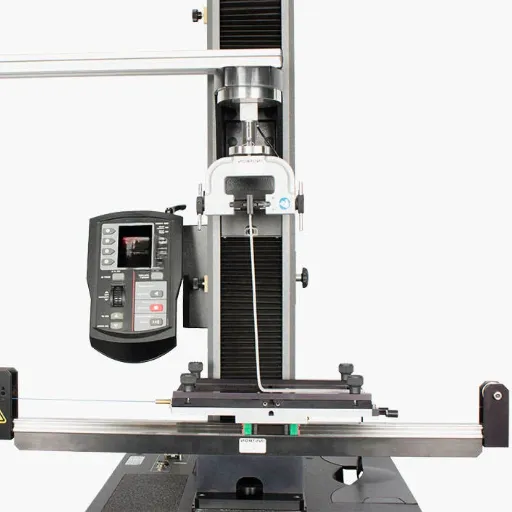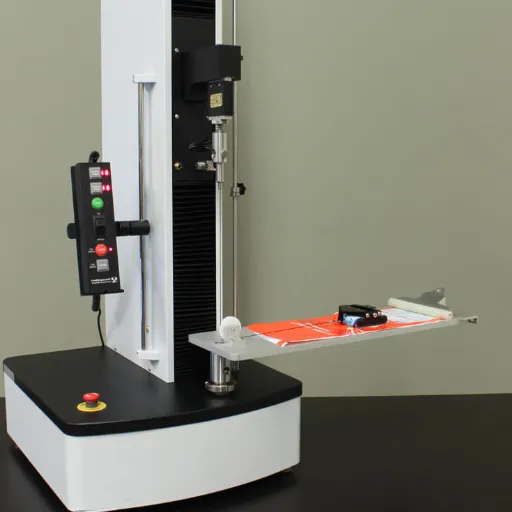Under the weight of a heavy load, friction becomes a crucial factor in the performance of materials and mechanical systems. The Heavy Load Friction Tester represents the most modern instrument for studying frictional behavior and wear processes under extremely high stresses. This article, therefore, analyzes the theory of friction testing, the technology employed by these sophisticated testers, and its application in various industries. Essentially, friction testing is a subject matter that helps optimize material performance to reduce wear-related failures, from the automotive level to industrial machinery. Let’s take a deep dive together on how heavy-load friction testers are changing the nature of material testing and engineering solutions.
Introduction to Friction Testing
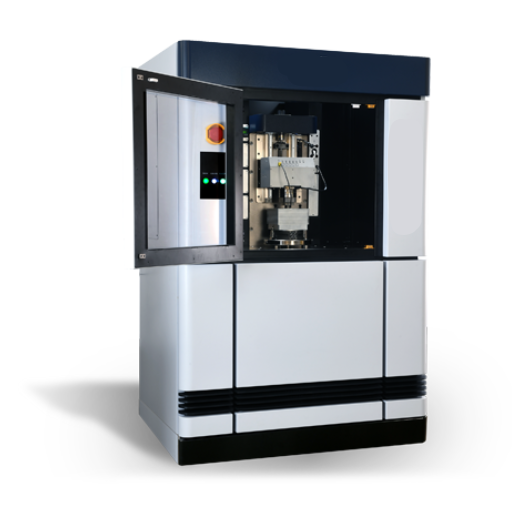
Friction testing measures the resistance occurring between two sliding surfaces. Such testing is crucial for characterizing the properties of a material in terms of wear resistance, coefficient of friction, or durability. Valuable data is provided to help engineers and researchers ascertain material performance under varying loads, speeds, or under different environmental conditions. By incorporating an understanding of frictional behavior, industries can efficiently improve designs to achieve greater product reliability and fewer mechanical failures, enabling real-world performance with adequate and prolonged service.
What is a Heavy Load Friction Tester?
As an advanced mechanical testing device, it is used to examine the friction and wear characteristics of materials and components under high loads. Typically, these machines simulate the actual working of huge forces, allowing researchers to study the behavior of materials under such stresses, including coefficients of friction, wear resistance, and durability. Heavy-load friction testers with high-precision sensors and solid-state control systems enable highly accurate measurements of performance parameters in diverse industrial applications, such as automotive, aerospace, and heavy machinery. Today, many such models feature an automated data acquisition system that facilitates the detailed analysis of frictional behavior and wear patterns in real-world applications, which is absolutely necessary for material selection and engineering design.
The Importance of Friction Testing in Materials Testing
Friction testing is essential to materials testing, as it determines the resistance to motion between two surfaces in contact and, hence, is critical in identifying the wear, durability, and efficiency of materials. Precisely assessing frictional properties enhances engineers’ ability to tailor material performance for specific applications, conserve energy, and promote the safety and longevity of components. Capitalizing on this, the automotive and aerospace industries, vis-à-vis friction testing, help to design highly reliable braking systems, reduce the wear of components, and decrease fuel consumption. The test, meanwhile, provides further assistance in the development of new materials and coatings, thereby taking into account the harsh demands of engineering nowadays.
Overview of Tribometers and Their Role in Friction Testing
Tribometers are special-purpose instruments that measure friction, wear, and lubrication properties of a pair of materials under controlled conditions. These instruments become critical for checking material performance in the automotive, aerospace, and manufacturing trades. By imitating actual working environments, tribometers give highly detailed information about how materials react under a specified load, speed, and environmental condition.
There are many differently specified tribometers available in the market. A few common types are pin-on-disk tribometers that measure sliding friction and wear; reciprocating tribometers are used for lubrications and coatings in the back and forth motion; and rotational types like four-ball tribometers are usually meant for analysing lubricated contacts under high pressure.
Thanks to their precision, tribometers allow engineers to further optimize material design, select appropriate lubricants, and foretell long-run performances of components. This helps in making sure that the products are safe, efficient yet durable in minimizing failure rates and also costs in industrial applications.
How a Heavy Load Friction Tester Works
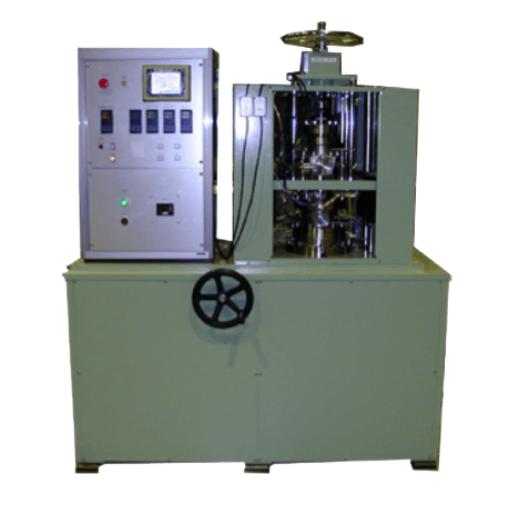
Heavy loads from operational conditions simulate-and-wear-after frictional interactions-in the areas of frictional analysis of materials under heavy loads. Usually, this instrument applies a certain force to a particular test specimen, which comes into contact with the counter-body. Meanwhile, the sensors and monitoring systems measure the frictional forces, temperature variation, and extent of deformation of materials with high precision. Depending on the specialized design, the friction tester may be of a rotating type or linear type to simulate real-life situations. The results acquired for the test would be used in evaluating performance, modifying material properties, and confirming their utility for high-stress applications.
Principles of Friction Testing
The principles of friction testing are generally based on judging resistance that occurs when two surfaces are in relative motion. The important aspect involves measuring the coefficient of friction (COF), representing the ratio of frictional force to normal force. Emphasis is often placed on mimicking actual working conditions: load, speed, temperature, and material interactions. Cutting-edge friction testers have a controlled environment, dynamic motion setting, and accurate force sensors to collect reproducible data. The results serve as cornerstones in areas such as wear evaluation, material compatibility, and lubrication efficiency, whose end goal is to ascertain that materials and designs fulfill performance-based industrial needs.
Test Procedures for Heavy Load Testing
- Sample Preparation
Ensure all test samples are cleaned and prepared before testing in accordance with standard operating procedures to remove substances that might affect the test results. - Calibration of Equipment
The testing equipment should be reviewed and calibrated, including the load cells, sensors, and test fixtures. This is carried out to guarantee the accuracy of the measurements. - Setting Test Parameters
Determine the test parameters such as the rate at which the load will be applied, the maximum value of the load, the duration of the test, and the environmental conditions such as temperature and humidity. - Pre-Test Inspection
Please conduct a visual inspection of the surfaces of the test specimens and equipment set-up to check for any imperfections, misalignments, and safety concerns. - Load Application
Apply the stipulated heavy load gradually in a controlled manner while monitoring the applied force and displacement in real time to preempt equipment failure. - Data Acquisition
As the test procedure continues, record its critical parameters that include stresses, strains, and displacement using appropriate high precision sensors and loggers. - Environmental Simulation
As needed, simulate required environmental conditions such as high temperature, pressure, or corrosive environment, to evaluate the behavior of materials when subjected to operational stresses. - Post-Test-Analysis
At completion of the test, remove the specimens and carry out wear, deformation, or failure mode analyses. Record all findings with photographic evidence plus precise measurements. - Data Processing and Validation
Analyze the amassed data; validate the data concerning any discrepancies identified; and compare it with predefined parameters or industrial testing standard values. - Reporting
Generate a comprehensive report along with graphical presentation for a detailed explanation of objectives, methodology, results, and conclusions.
Types of Friction Testing Methods: Block-on-Ring vs. Rotational
Block-on-ring, rotational, pin-on-disk, and linear reciprocating methods are primary friction testing techniques. Below is a concise comparison of the block-on-ring and rotational methods:
| Parameter | Block-on-Ring | Rotational |
|---|---|---|
| Motion | Sliding | Rotational |
| Contact | Point/Line | Surface/Area |
| Load Type | Static/Dynamic | Dynamic |
| Speed | Adjustable | Adjustable |
| Material | Versatile | Broad Range |
| Wear Test | Yes | Yes |
| Setup | Simple | Complex |
| Cost | Low | High |
Applications Across Various Industries
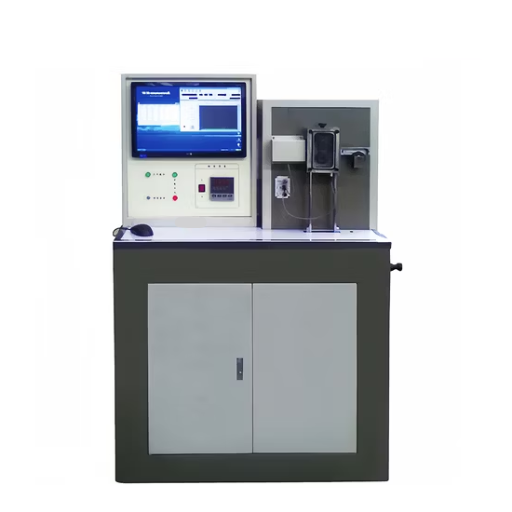
Heavy load friction testers are indispensable tools in several industries since they simulate material performance and behavior under high stresses.
Automotive
For the wear-resistance testing of brake pads, clutch systems, and tire materials to assure safety and reliability.
Aerospace
For testing high-performance materials subjected to extreme pressures and temperatures to assure the highest possible level of durability and functionality.
Manufacturing
Gears, bearings, and seals testing to enhance material selection and improve product service life in machines.
Energy
Testing the abrasion resistance of turbine blades and drilling equipment under heavy loads.
Research and Development
Laboratories utilize them to subject new materials or coatings to tests for durability and wear characteristics.
Heavy load friction testers generate data that are often vital for the development of materials and safety standards as well as the realization of product quality.
Automotive Industry: Ensuring Safety and Performance
The automotive industry relies greatly on heavy load friction testers for the examination of the behavior of materials and components subjected to extreme stress and friction conditions. The devices fashioned tests to simulate real conditions, whereby the wear, coefficient of friction, and durability of brake pads, clutches, and all other necessary components are measured. Friction testing ensures the development of parts that meet or exceed a high level of safety and performance standards and thus helps industries to improve the reliability of vehicles and the longevity of components while also fulfilling regulations within the industry. This testing promotes the development of automotive materials, which in turn leads to a better working life for the consumers’ benefit.
Aerospace Applications: Meeting Strict Quality Standards
The aerospace sector demands unmatched precision and compliance with stringent safety regulations owing to the high degree of risk involved in aircraft performance and safety. Heavy load friction testers come into play in ensuring an industrial fitment of materials that tribologically may be in use in aircraft components such as landing gears, turbine blades, and braking systems. These tests ensure that materials can resist extreme pressures, temperatures, and operational stresses while maintaining their best functions. By accurately simulating harsh conditions, friction testers not only assess the durability and reliability of aerospace materials but also contribute to the development of composites and coatings at a higher scale. This is an important step in ensuring that all aerospace components conform to the very stringent quality and safety standards set by the regulatory authorities hence guaranteeing the integrity of an aircraft as well as passenger safety.
Manufacturing and Material Science: Enhancing Product Development
The animation of innovation and efficiency within product development lies in manufacturing and material science, intrinsically. Material science is concerned with the characterization and engineering of substance properties in order to develop new materials such as alloys, polymers, and composites. These materials are then integrated into manufacturing operations to produce components that are lighter, stronger, and more durable to meet increasingly complex industry needs. New technology has further revolutionized manufacturing with processes such as 3D printing and nanotechnology, offering precise and customized solutions. Moreover, computational modeling and simulations further help to improve material selection and product design, thus accelerated time-to-market while minimizing waste of resources alongside complying with stringent quality and performance standards. All these innovations have made material science a prime enabler for advancing technology across domains such as aerospace, automotive, and electronics.
Benefits of Using Heavy Load Friction Testers
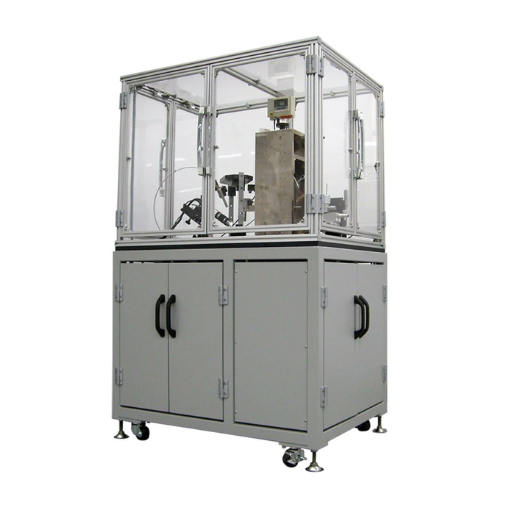
Heavy-load friction testers provide a very vital knowledge of the performance and durability of materials under very harsh conditions. Recreating situations of high pressure and high friction, they allow for very accurate measurements of coefficients of friction, wear-resistance, and deformation of materials. This knowledge is used to guarantee the efficacy and durability of components subjected to harsh conditioning in automotive, aerospace, and heavy industry manufacturing. These tests are also important in terms of maintaining standards and industry regulations and put forth a defense of risk on failure, thereby pushing towards better designs and material selections.
Improving Efficiency in Testing Processes
Heavy-load friction testers are of invaluable aid in creating efficiency during the testing process. These testers provide insight on how materials behave and undergo changes when subjected to high-stress conditions by accurately measuring friction and wear performance under simulated real-world conditions. They reduce paperwork and the time needed for testing with their automation of otherwise complicated testing procedures. Also, the repeatability of test data ensures a minimum level of variability and reliability of results. This streamlined process allows for fast decision-making with respect to material selection and product development, hence answering the urge in industries to maintain a fast-paced approach.
Ensuring Safety Through Accurate Data
Safety assurance is among the critical benefits that heavy load friction testers offer through provision of reliable and accurate data. Firstly, heavy load friction testers simulate actual conditions at high stress, thereby deriving very accurate coefficients of friction for the materials and measurement of their wear performance. It is thus assured that the materials conform to the specifications of safety standards. Secondly, by having very consistent and repeatable results, they draw away from variability of test data, which is vital as a basis for decision-making in application areas like automotive braking systems and industrial machinery. Thirdly, the modern heavy load friction testers are mostly automated, thereby reducing the chances of human error and giving rise to economic and efficient testing regime demanded by the industry in terms of time and accuracy.
The Role of Friction Testing in Quality Control
Friction tests are paramount for quality control of material and products performance, safety, and reliability in various fields. By measuring the frictional properties of surfaces under controlled settings, wear-resistance can be determined, and product design is optimized together with assessments of the performance of the products over time. This becomes essential in very critical systems where friction impacts operation; braking systems, conveyor belts, and sealing components are some of them.
Further, friction tests form one of the most important means towards strict quality standards. Therefore, this provides quantitative data of compliance to manufacturers with respect to industry and legislation as well as certifications. Results from the friction test give insight as to which areas are prone to defects so that the engineers can draw amendments to the manufacturing line. This looks at guaranteeing an equal level of performance of the products and certainly reducing the risk of failure and eventually marry-enhancing user safety.
Maintenance Tips for Optimal Performance
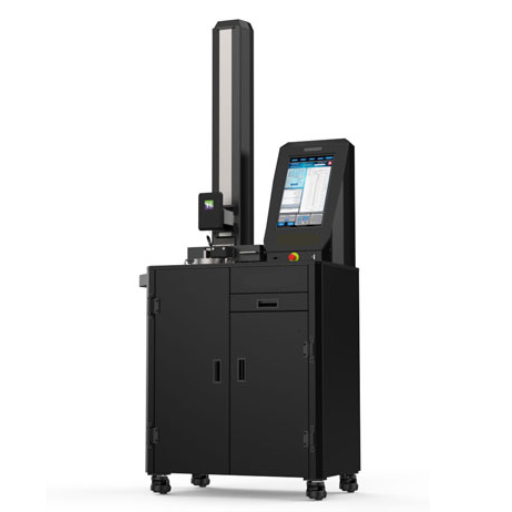
- Periodic Calibration: Calibrate the equipment periodically against certified standards to ascertain accuracy in measurements and their fidelity over time.
- Lubrication: Give lubrication to moving parts as per the manufacturer’s directives to prevent excessive wear.
- Component Inspection: Check vital components such as friction plates, load cells, and sensors regularly for wear, damage, or misalignment.
- Good Housekeeping: Have the tester cleaned of debris, dust, or remnants after every use to avoid errors in measurement.
- Environmental Conditions: Operate the tester in a controlled environment where temperature and humidity are kept stable.
- Software Updates: Keep firmware or software of the devices updated in accordance to the latest versions to gain advanced features and fixes for bugs.
- Maintenance Documentation: Maintenance activities and repairs shall be well documented to allow for tracking of the equipment condition and to avoid any subsequent failures.
Following these maintenance practices will ensure a high-performance level, accuracy, and-long life for your heavy load friction tester.
Routine Maintenance Best Practices
To have a heavy load friction tester function optimally and stay in working order for a good while, it should be worked on routinely using these best practices:
- Scheduled Inspection: Set up regular intervals to do inspection for wear and tear on key components such as bearings, shafts, and loading mechanisms so early detection of something untoward can be addressed.
- Lubrication: From time to time, lubricate moving parts. Any failure in lubrication or degraded lubricants will only cause increased friction and rapid deterioration of the components.
- Calibration Checks: It must be checked after major repairs, upgrades, or according to the manufacturer’s specification, to ensure it is accurately calibrated.
- Cleanliness: Always be in the habit of cleaning your testing machine from any form of dust, debris, or residue left behind from previous tests. This may contaminate the spread and hence affect the accuracy of any given test.
- Environmental considerations: Ensure you keep on running your equipment under conditions, which comply with the manufacturer’s environmental criteria; for example, avoiding too high humidity or severe temperature fluctuation that may damage the parts.
By systematically following these, I can ensure the heavy load friction tester remains accurate and reliable, thereby reducing the risk of downtime and any unexpected failures.
Common Issues and Troubleshooting
Addressing the common issues by simply following an ordered approach would guarantee that the heavy-load friction tester will perform in the best manner possible, and the occurrence of the problem will be minimized.
Importance of Calibration and Regular Checks
Calibration and regular checks are essential for maintaining accuracy, reliability, and operational life of any test equipment, including the heavy load friction tester. Calibration ensures the measurements remain true and match a pre-established standard, reducing error in data collection and analysis. Regular checks become vital in preventing any major wear and tear issues arising out of misalignments or even simple system malfunction, effectively cutting down on downtime and expensive repairs. Industry best practice suggests working on the basis of manufacturer guidelines and certified calibration tools to verify the performance. Through regular calibration and checks, operators are therefore assured that the entire process is maintained to the quality standards and is maximally optimized for operational efficiency.
Reference Sources
-
Bruker: TriboLab HD – A comprehensive high-torque friction materials tester for in-lab brake friction and particle emissions studies.
-
A&D Technology: High Pressure Environment Friction Tester – Focused on applications in automotive and appliance manufacturing, such as air conditioning systems and refrigerators.
-
Haisen Global: Best 10 Friction Testing Machine Options for Runway Use – Highlights advanced friction testing machines for ensuring the safety and reliability of runway surfaces.
-
Verified Market Reports: Pavement Friction Tester Market – Discusses the growing demand for friction testers in road safety and infrastructure.
-
Harland Medical: FTS7000 Friction Testing Machine – A versatile instrument for measuring the lubricity and durability of coatings under heavy loads.
Frequently Asked Questions (FAQs)
What is a Heavy Load Friction Tester?
A heavy load friction tester is a specialized instrument that evaluates the friction properties of materials in different situations of loads, especially when utmost loads are applied. It is important to evaluate brake materials, including brake pads and brake rotors, to ensure these materials meet standards international bodies such as ASTM and ISO. Hence, by simulating real-world conditions, these testers allow for testing of dynamic friction, which is required in automobile and aerospace applications.
How does a Heavy Load Friction Tester measure friction?
The heavy load friction tester measures friction by subjecting the test specimen to a precisely set load and at the same time measuring the torque that moves it in opposition to a surface. It thereby studies parameters such as sliding speed, contact pressures, and surface roughness, in the process of establishing useful data for tribology studies that define frictional performance of the subjects under a variety of conditions.
What are the best practices for Heavy Load Friction Testing?
It is important to maintain proper calibration of the equipment to develop reliable results. Maintaining a constant environmental condition of temperature and humidity should be considered. The surfaces also ought to be prepared to retain a particular surface finish and be properly aligned to the rest of the components. This will guarantee that the results of testing will be highly reliable.
What types of materials can be tested in a Heavy Load Friction Tester?
A heavy load friction test can be carried out on a large array of materials, including braking materials, metals, polymers, and composites. These materials are tested for their frictional properties, wear-resistance properties, and their efficiency for particular applications such as automotive braking systems and industrial machinery.
What is the Role of Tribology in Heavy Load Friction Testing?
The discipline of tribology involved in friction, wear, and lubrication plays a crucial role in heavy load friction testing. One needs an understanding of surface interactions to measure friction and evaluate material performance accurately. The knowledge derived from tribological studies significantly contributes to designing improved materials and systems, which eventually enhances safety and efficiency in their applications, such as brake systems.
Are environmental parameters a source of variation in Heavy Load Friction Testing?
Environmental factors such as temperature and humidity could impose variations in the outcome of heavy load friction testing. Low temperatures may affect the viscosity of the lubricant, whereas high humidity will provoke corrosion on the test surfaces. It is hence critical to control those parameters to have test results that would be consistent and truly reliable in reflection of actual operating conditions.

